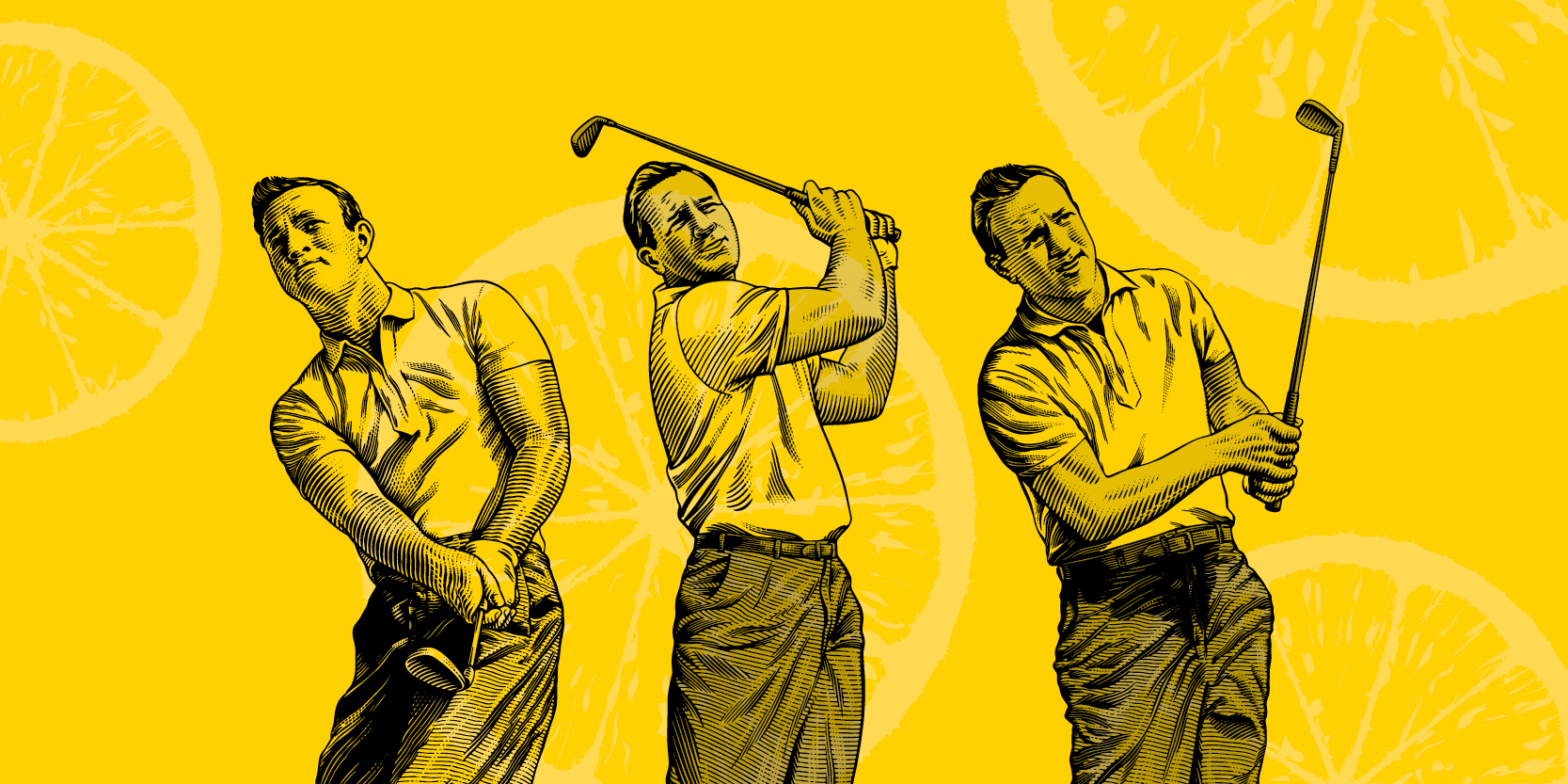
It existed before its first cobblestone was laid. Nothing so silly as a dream, but an ideal, committed to paper with its town squares and its moral compass plotted neatly in straight lines. James Oglethorpe and others believed in it, and so in 1733 they sailed from England and built it, an Enlightenment-era utopian experiment in charity and freedom in which economic equality was mandated, religious freedom proclaimed, and slavery banned. Standing in one of its town squares 150 years later, looking back through the ruins of the Civil War, could anyone have imagined what might have been—or what was yet to come—for Savannah
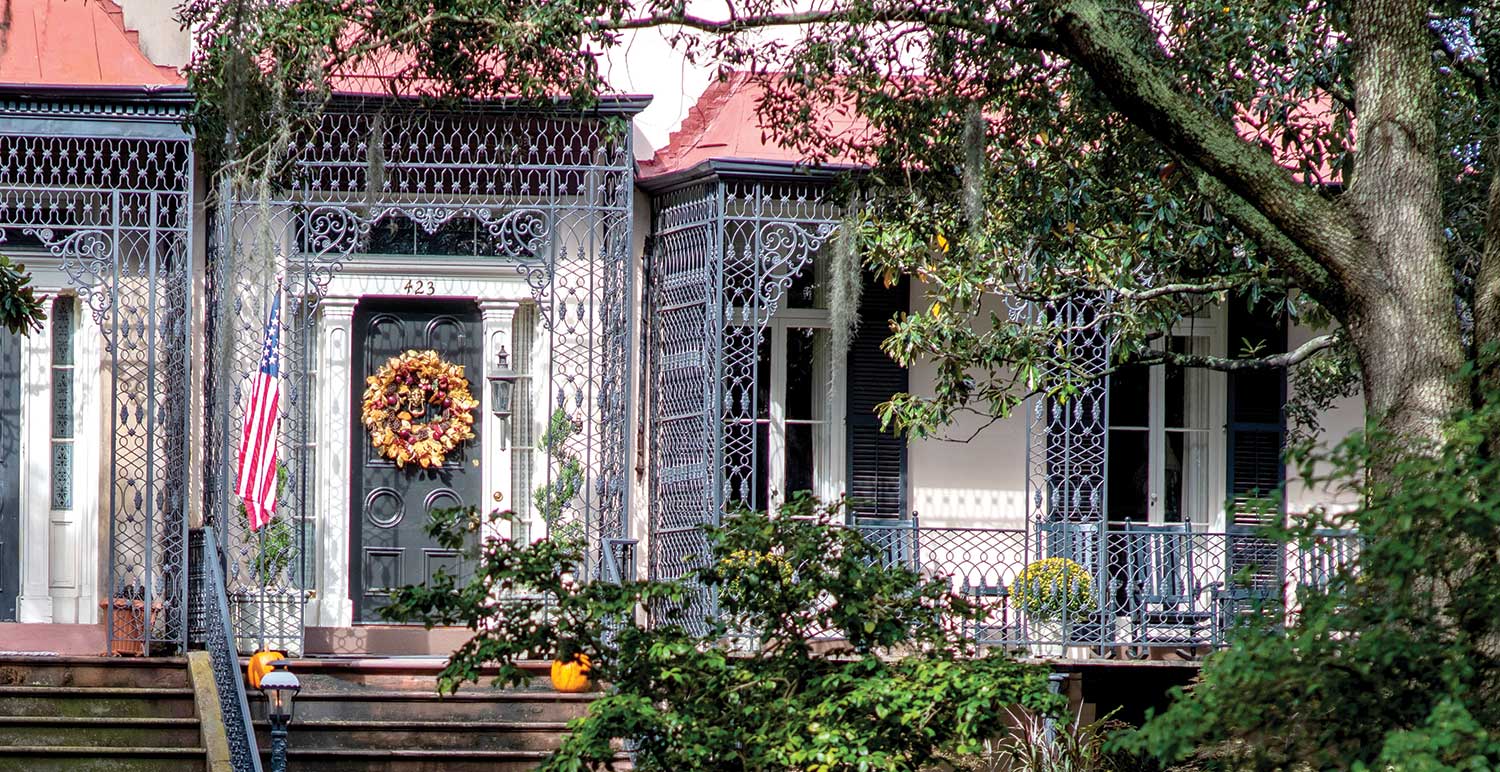
Oh dream maker, you heart breaker Wherever you’re going, I’m going your way.
The Savannah River inspired Johnny Mercer’s lazily hopeful lyrics in the song Moon River, evoking his childhood along its banks dreamily anticipating life’s possibilities. But the song’s melancholic tune seems to accept that there’s sadness in life’s journey as well, and so it has been for Mercer’s hometown. One of America’s most charming cities began as a utopian ideal, quickly entered a monstrous period of success as a center of the slave trade, and then suffered the consequences of the Civil War. Savannah carries all of that in its soul today, and as it works to reconcile with its past so has it rediscovered some aspects of its idyllic foundations. In 2020 Savannah’s charms are as present as they’ve ever been, but there’s also a progressive feeling in the air, a sense that, in some ways at least, it is more like the city it was envisioned to be in 1733—only with much better dining and accommodations.
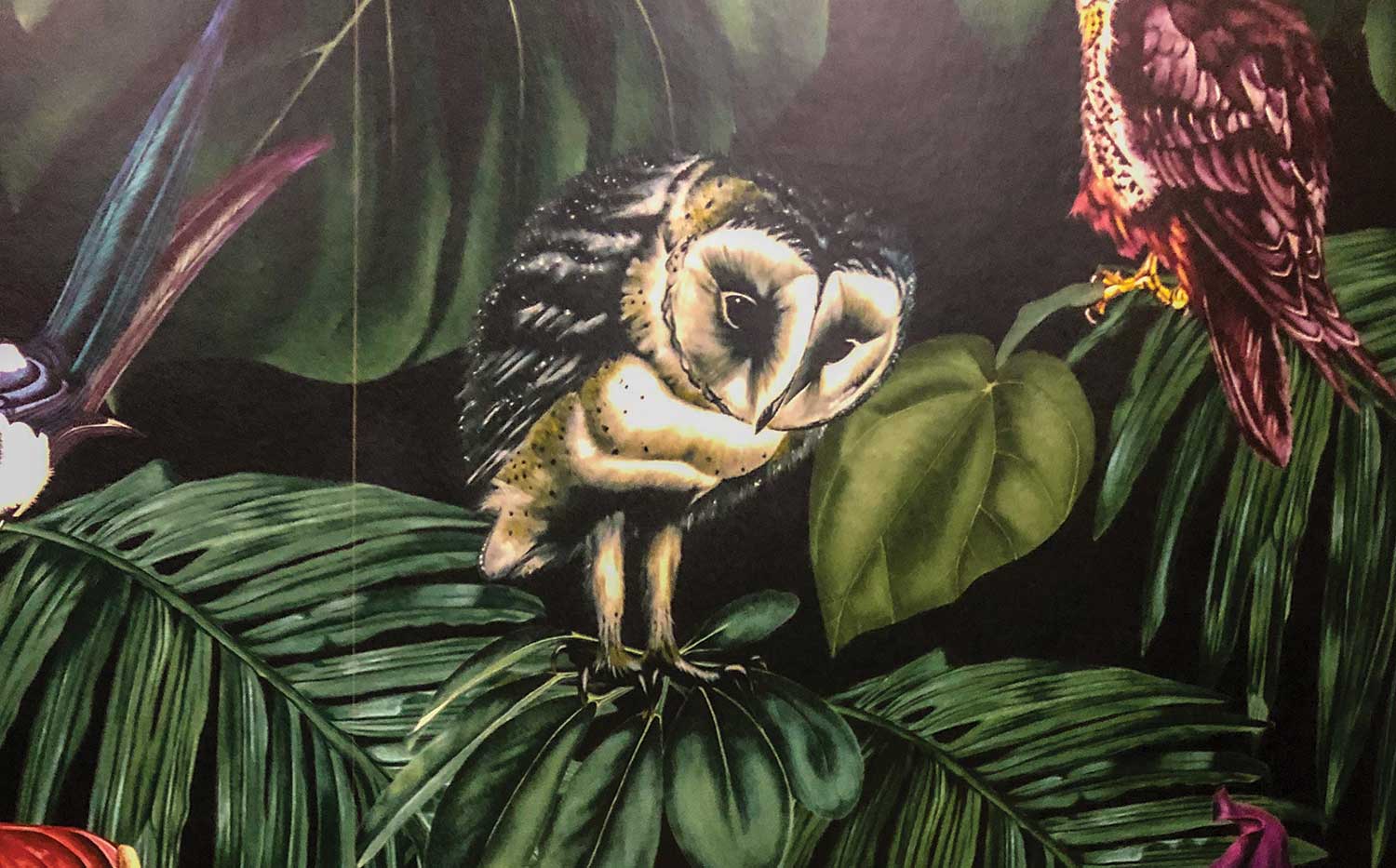
For evidence of progress, one need look no further than the Perry Lane Hotel. Fresh, clean, cutting-edge luxury awaits in a property that will delight discerning explorers accustomed to metropolitan standards and cultural felicity. The place is bursting with curious art and playful design, the rooms are modern, and the on-site sustenance—via the Emporium and Peregrine restaurants and The Wayward bar—is some of the city’s best. But more than just appealing to contemporary-minded guests, Perry Lane is enjoyed by local regulars, and there are visiting artists, fashion shows, and ties with Savannah College of Art & Design (SCAD), an institution founded in 1978 that many credit as a force for local culture. One morning at Perry Lane’s Bowerbird Coffee, the young barista at the counter had just finished sketching an incredible illustration on a napkin. A SCAD student, her employ here underlines the connection between the hotel and the college, and the resulting creative energy. In regard to plotting Savannah’s future, spaces like this don’t just accommodate the conversation, they help to drive it and, in a city with Savannah’s possibilities, that’s fantastic.
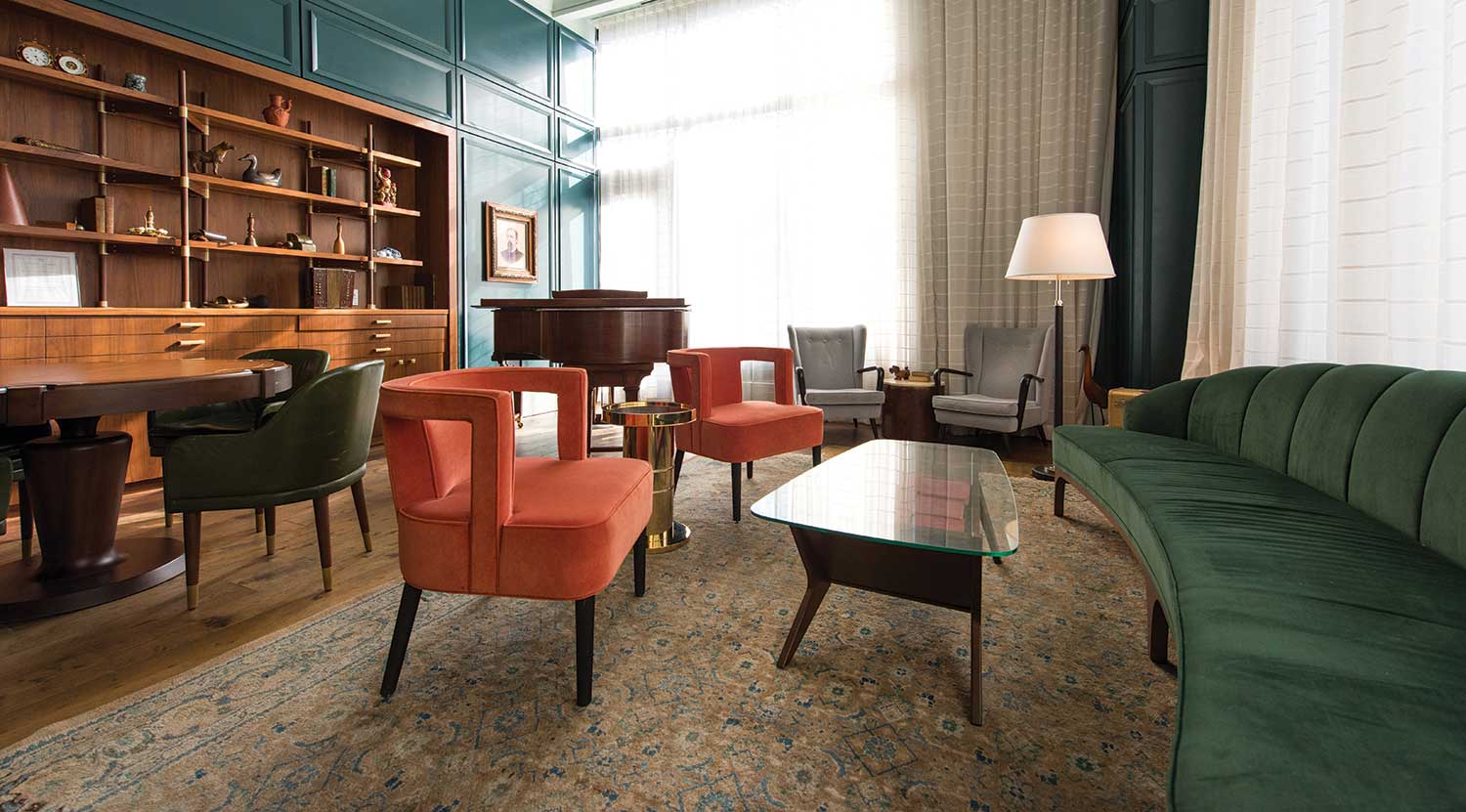
For its first 19 years Savannah was a bright experiment in Enlightenment ideals. Slavery was outlawed, religious freedom assured, and every settler in the new Colony of Georgia received 50 acres of land, which could not be sold, traded nor borrowed against—policies meant to prevent individuals from concentrating land and wealth. British Parlimentarian James Oglethorpe and a group of investors created Georgia in 1733 by convincing King George to free those in England’s debtors prisons and to give them a second chance. The land laws, prohibition of slavery and religious freedoms were based on Enlightenment ideals and, for a brief time, it seemed to work. Oglethorpe had planned the city before he arrived, designing it around 24 town squares (22 of which remain today). A Jewish community was established, and the future looked good. But a failed agricultural program and discord among residents who felt trapped on their land led to the crown pulling the colony’s charter and taking over in 1752, with the most dire consequence being the permittance of slavery. More than just allow it, Savannah embraced it, and in 1859 the city hosted the largest single sale of enslaved persons in Georgia history. Over two days in March, 436 men, women, and children were sold by plantation owner Pierce M. Butler to satisfy creditors. The auction’s destruction of families became known as “The Weeping Time” and, via its reporting in Northern newspapers, it deepened the then-growing divide in the run-up to the Civil War.

Savannahns of the late 19th century would find the structure and legendary hospitality of their city much as they left it, but they hardly would believe its improved égalité. Four of the last five mayors have been African Americans, the crowds on River Street hail from all over the world, and the emerging arts and culinary scenes transcend traditional Southern offerings. Nowhere else in America, perhaps, does the past so effortlessly house the present and drive the modern. Consider Mashama Bailey, an African American woman and arguably Savannah’s best chef. The Bronx native, who attended grammar school in Savannah then returned to NYC as a kid, was featured on Netflix’s Chef’s Table. On the show, she discussed her return to Savannah to open The Grey restaurant with John O. Morisano, siting it in a restored, formerly segregated Greyhound bus terminal.
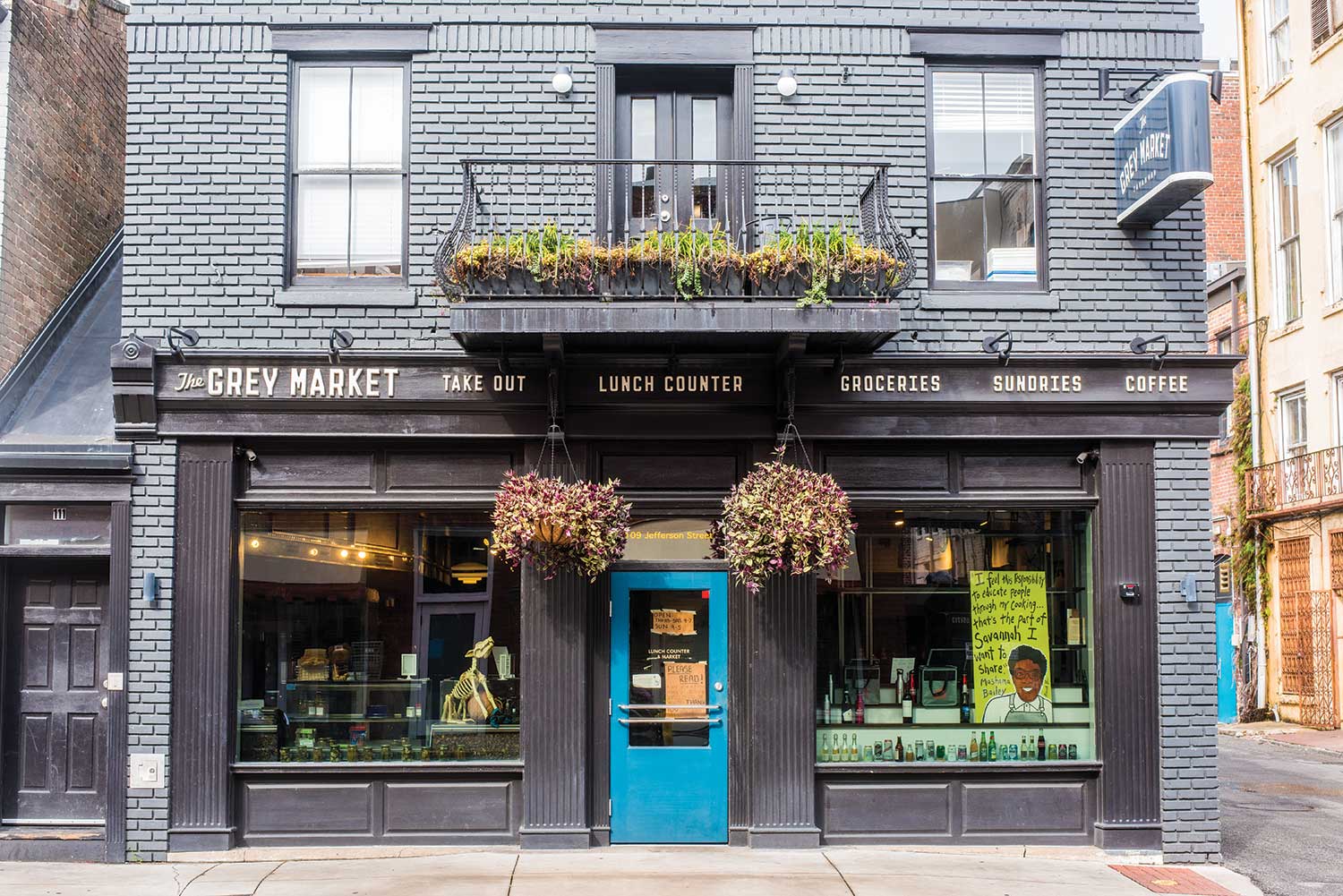
“My ancestors were here,” she explained, “and so many struggles have happened in this building. I felt a connection.” When Bailey won the 2019 James Beard award for Best Chef in the Southeast, she was the first Savannah chef in 19 years to take such an honor. The Grey, and her side project The Grey Market, are among Savannah’s most lauded food venues, and are surrounded by others as well, including Repeal 33 and its house-made wonders. Even the city’s staples are good, such as Sorry Charlie’s Oyster Bar. The neon fish sign is from 1947, but the service and fare are wonderfully timeless, like so much else here. (Ask for Marvin Duran, and tip him well.)
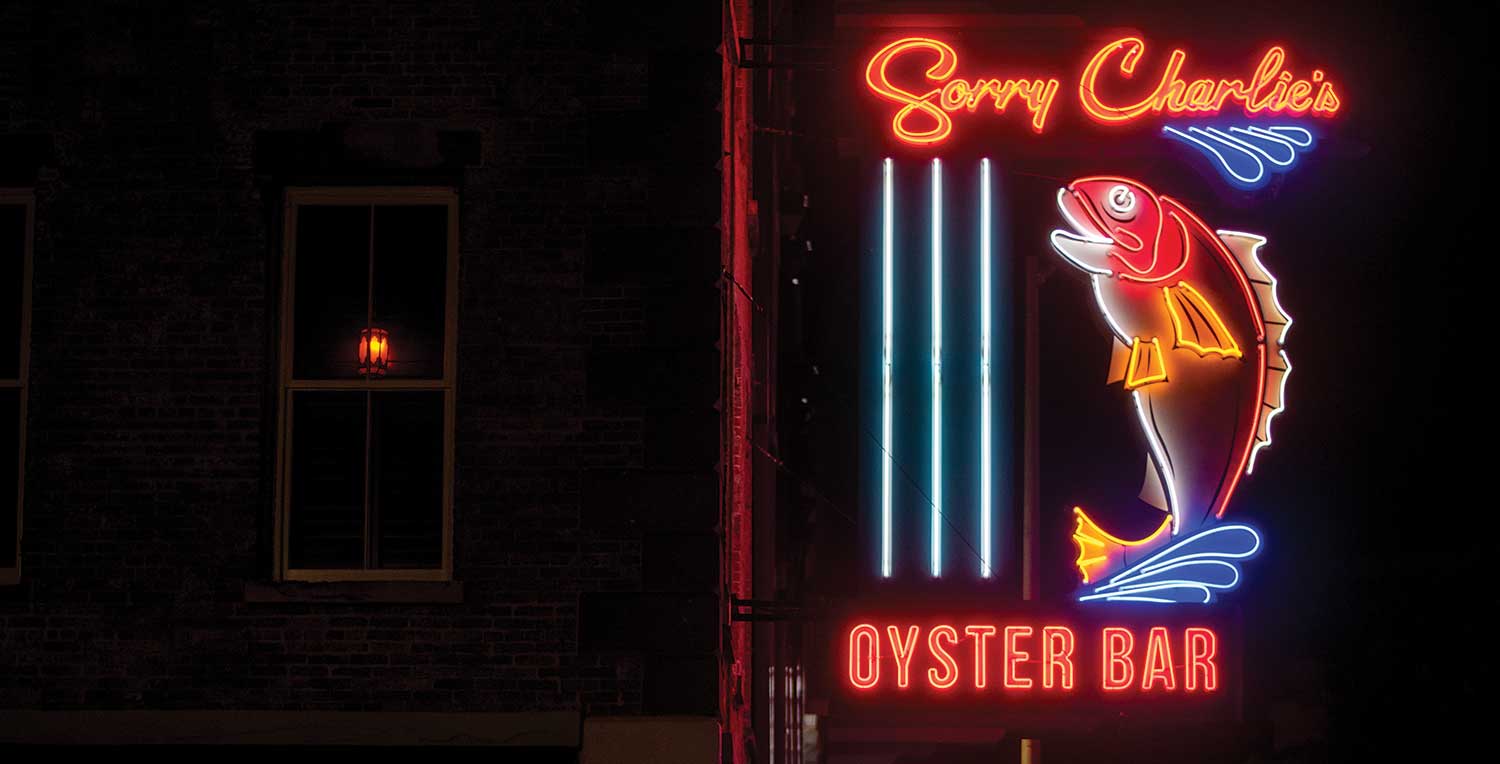
In 1864, after Savannah’s defiant belles had stood in their crinolines and bows as Gen. Sherman marched into town with his troops—and did not burn the city, instead presenting it to President Lincoln as a “Christmas Gift”—a young girl named Daisy was compelled to entertain Union Gen. O.O. Howard in her prominent Southern family’s home. “You have only got one arm!” she is said to have exclaimed to the General, who replied, “It was shot off in battle,” adding that Southern rebels had done it. “Did they!” Daisy gaily said. “Well, I shouldn’t wonder if my papa did it. He has shot lots of Yankees!”
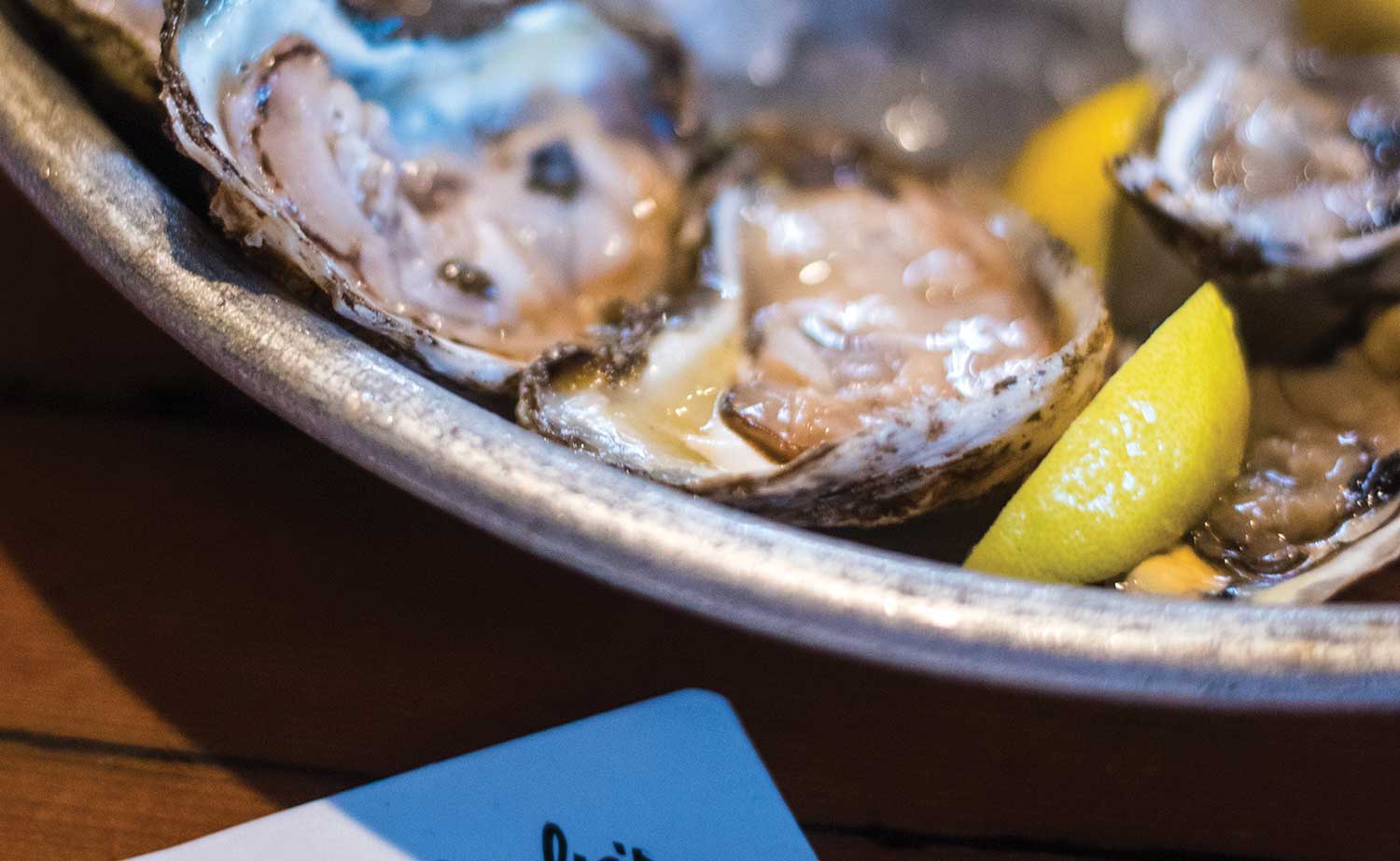
Daisy, aka Juliette Gordon Low, went on to found the Girl Scouts, and today her home is a museum. Not far from that you can order a “Unicorn’s Mane” at Mirabelle Cafe (2015)—double espresso, rose water, cardamom, steamed milk, and just incredible—only steps from St. John’s Cathedral (1876), then make the short walk to the fountain at Forsyth Park (1858) where you can ponder the fact that the Perry Lane Hotel exists in a new building that seems historic, and that Savannah isn’t as easy to describe as parasols and horse-drawn carriages and the river running through it. All of that is a part of the story, but a bigger part is being written today by people like Chef Bailey, the barista sketching on a napkin, and others who are more aligned with their city’s original plan than its 19th century history. When it comes to the Savannah of tomorrow, count us in as smitten dreamers. It’s waiting ’round the bend, and wherever it’s going, we’re going that way.
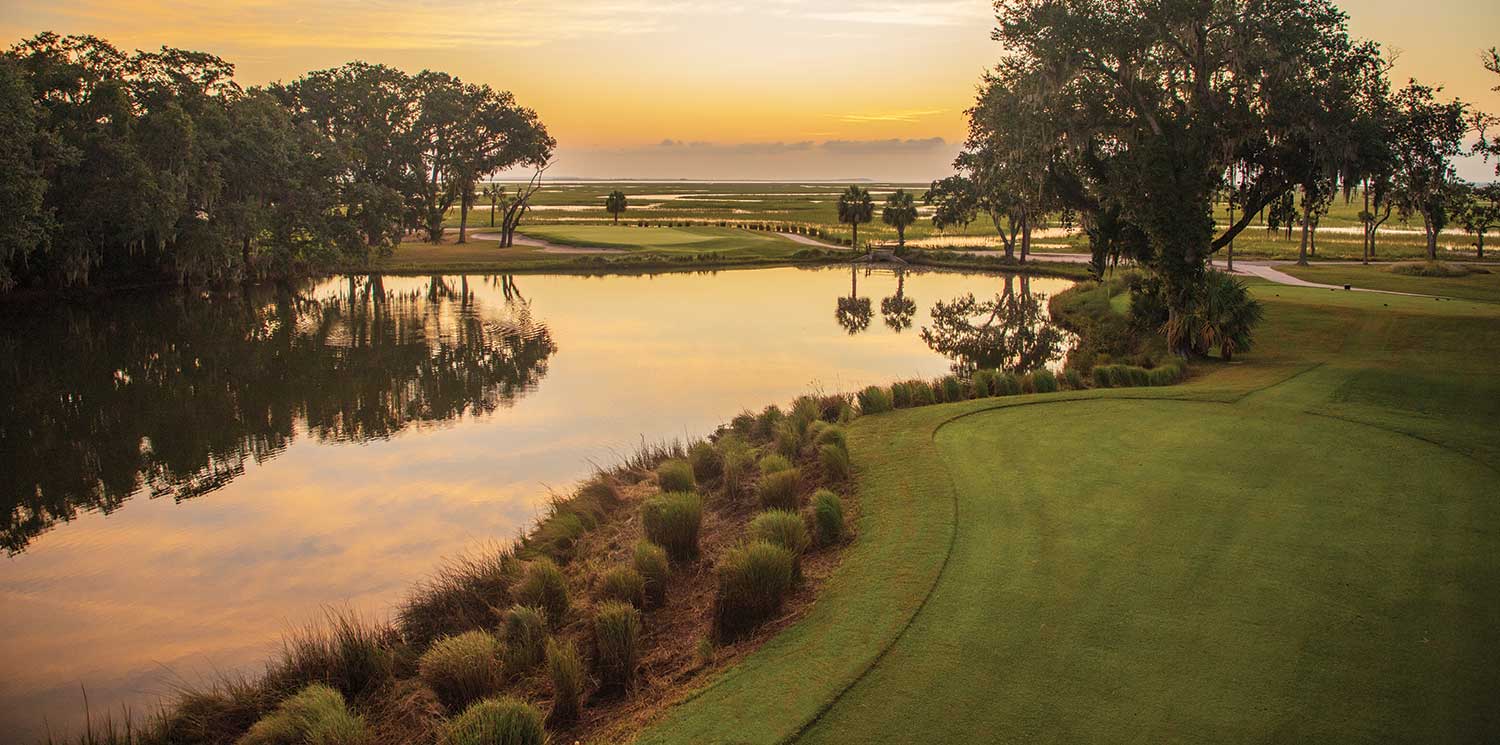
Traveling to Savannah, it occurred to us that the city’s charms might compel us to stay, and so it was impossible not to consider life at the incredible Landings community. Tucked amidst Southern pines on Skidaway island, just 10 minutes or so from Savannah’s city center, The Landings is one of America’s premiere communities, boasting six championship golf courses, great dining options and an engaged membership. Everyone here enjoys 30 miles of walking, biking and jogging trails; two full-service deep-water marinas; a two-acre community garden; and a host of other incredible amenities. Club members also enjoy world-class golf, 30 or so tennis courts, four unique clubhouses with farm-to-table dining, numerous swimming pools, an astounding Fitness & Wellness Center, and more.
Beyond the amenities, however, The Landings holds tremendous appeal due to its commitment to its members and for its incredibly well-balanced lifestyle, offering a range of resort-style amenities that support working families, retirees or seasonal residents in equal measure.
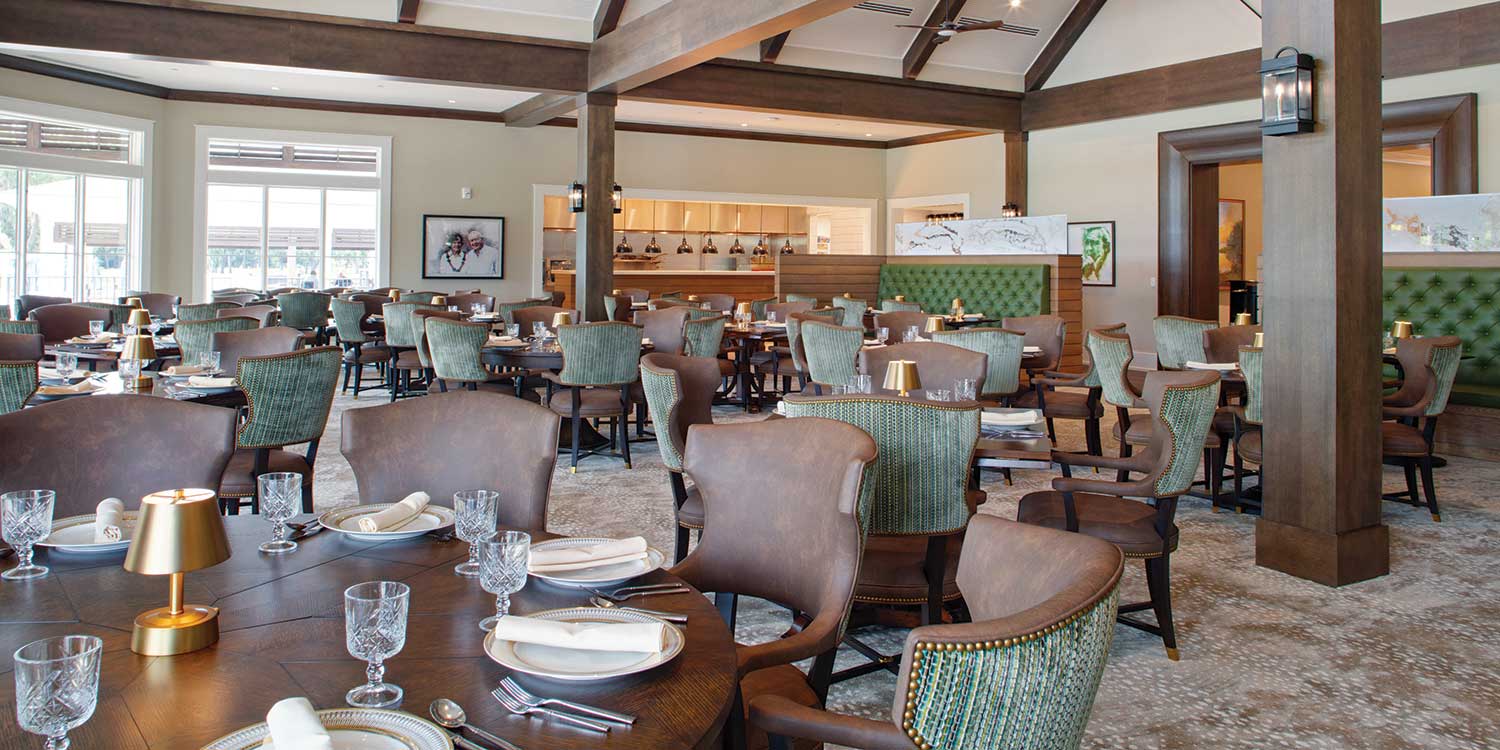
Most notably for fans of Arnold Palmer, The Landings’ Marshwood Clubhouse recently underwent a complete renovation. The new venue is an architecturally stunning 23,500 square feet with a resort-style pool complex featuring a Cabana Bar and two interior dining options that honor Arnold Palmer: Palmer’s Steakhouse and Arnie’s Tavern. Recently, it won an award from Golf Inc.’s “Clubhouse of the Year” awards, and it’s no wonder. Equal parts beautiful and functional, the clubhouse is but one of four clubhouses at The Landings, each with its own personality. A range of dining options and identities are on offer throughout the property, with the upscale community’s relaxed side on view at The Deck, a “fast-casual” dining facility that’s happy to take members coming off the tennis courts or golf course, from the pool or anyplace else where people are dressed to play and relax. Serving a variety of approachable fare such as sandwiches, pastries, hand-tossed pizzas and more, it is one of the more popular venues on site. With young families and retirees alike making homes here, and so close to Savannah, The Landings is a model for other club communities looking to move forward, and not just for its incredible homesites, dining and hospitality. More than anything, The Landings is committed to its members. As Landings Executive Director Steven Freund told Kingdom, “Our members have embraced it all: pickleball, golf, wellness, tennis, we have a croquet lawn, the pools… It’s this multi-experiential club and a fantastic community of friends. People who want to live an abundant life, a life overflowing, we’d love to meet them.” landingsclub.com
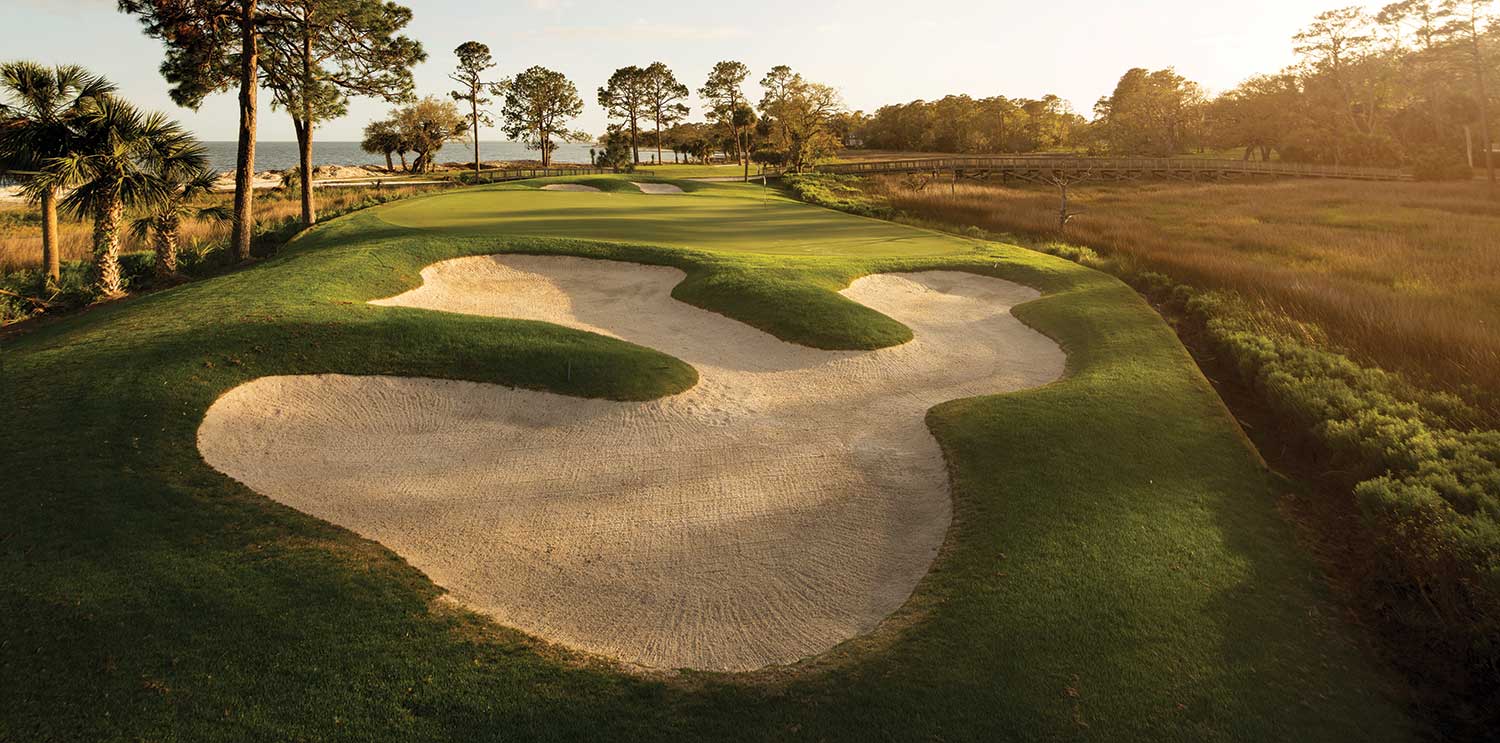
Less than an hour by car from Savannah we discovered Haig Point, one of those fantastic secrets hidden in plain sight that provides a lifestyle worthy of the best literature, distinctly American but appealingly universal in its simultaneous provision of pure Old World excellence and direct engagement with the modern world—when you want it. This is the setting for great stories and great lives, whether by resident or visitor.
Located on South Carolina’s Daufuskie Island, Haig Point has its own ferry. Embarkation is handled in a woodland area: pull up, drop your groceries and luggage with the valet, park in the protected lot, walk down the dock and there you are. The ride is 15 minutes or so, with hourly departures on the half hour, and the trip is beautiful, transformative even, allowing just enough time to exhale and to shift mentally from mainland to island. Residents can find their groceries waiting at their homes, while we found our luggage in our room. On an “experience” visit, we parked our Bentley in the lot and boarded the ferry at sunset, arriving a short time later at Haig Point’s centerpiece Strachan Mansion. The elegant 1910 building serves as the community’s centerpiece, housing the post office, a general store and a bar, along with accommodations for visitors and guests of residents/members.
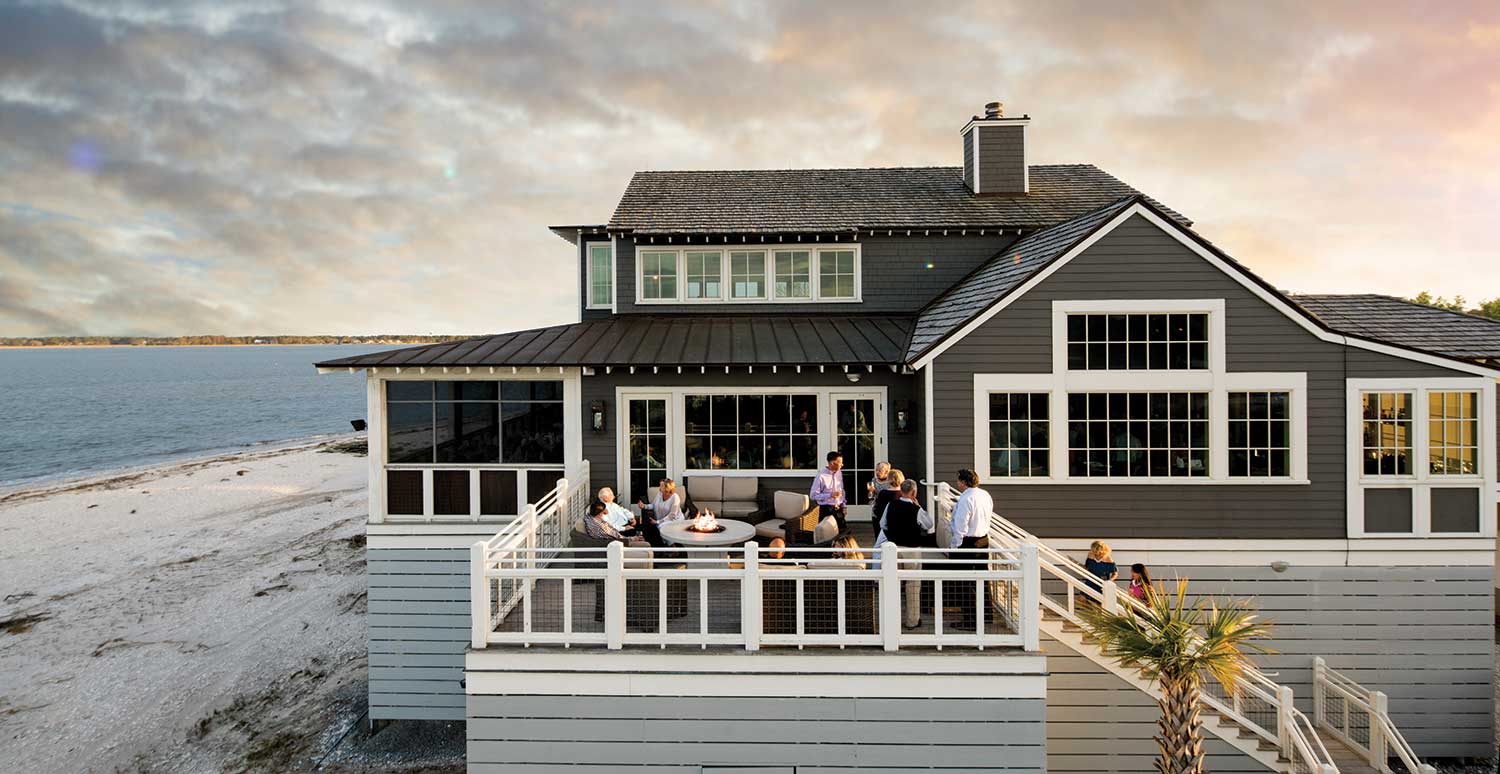
Our room featured a deeply comfortable bed, a mammoth clawfoot tub and access to the mansion’s large deck, with incredible views of the island and waterways. The next morning we toured the area by golf cart (there are no cars on the island), visiting the incredible Equestrian Center, games areas—including six Har-Tru tennis courts, bocce and more—and other amenities. There are 29 holes of golf here, including a well-maintained 20-hole course designed by Rees Jones in 1986 and another 9 (the “Osprey”) added later. The modern clubhouse holds everything golfers could want, including an executive meeting room—and truly, Haig Point’s out-of-area memberships are an unbelievable offering, providing opportunities for unique client or family engagements at a beyond-reasonable price point—while the rest of the island offers full-time residents (of which there are many) an enviable lifestyle just 10 minutes via water taxi from Hilton Head’s Harbour Town.
Internet here is better than most of the mainland, valet and concierge services are comprehensive and well managed by Haig Point staff, and the greater island holds charms as well, including the Daufuskie Island Crab Co, a waterside restaurant and bar at which you might see a rock star or two. Beyond all of that, the forested lanes, the pastoral vistas, the clean beaches and refreshing quiet make for the kind of living one might believe to be reserved for the best fiction, but this is real. There’s a new elementary school here, a Beach Club and incredible dining and amenities, all of it a world away from anything but so close to the best of everything. We found it clarifyingly real, and difficult to leave. For vacation, for business, or for living, Haig Point is simply stunning. Visit haigpoint.com for more.

Follow Us On


| Cookie | Duration | Description |
|---|---|---|
| cookielawinfo-checkbox-analytics | 11 months | This cookie is set by GDPR Cookie Consent plugin. The cookie is used to store the user consent for the cookies in the category "Analytics". |
| cookielawinfo-checkbox-functional | 11 months | The cookie is set by GDPR cookie consent to record the user consent for the cookies in the category "Functional". |
| cookielawinfo-checkbox-necessary | 11 months | This cookie is set by GDPR Cookie Consent plugin. The cookies is used to store the user consent for the cookies in the category "Necessary". |
| cookielawinfo-checkbox-others | 11 months | This cookie is set by GDPR Cookie Consent plugin. The cookie is used to store the user consent for the cookies in the category "Other. |
| cookielawinfo-checkbox-performance | 11 months | This cookie is set by GDPR Cookie Consent plugin. The cookie is used to store the user consent for the cookies in the category "Performance". |
| viewed_cookie_policy | 11 months | The cookie is set by the GDPR Cookie Consent plugin and is used to store whether or not user has consented to the use of cookies. It does not store any personal data. |